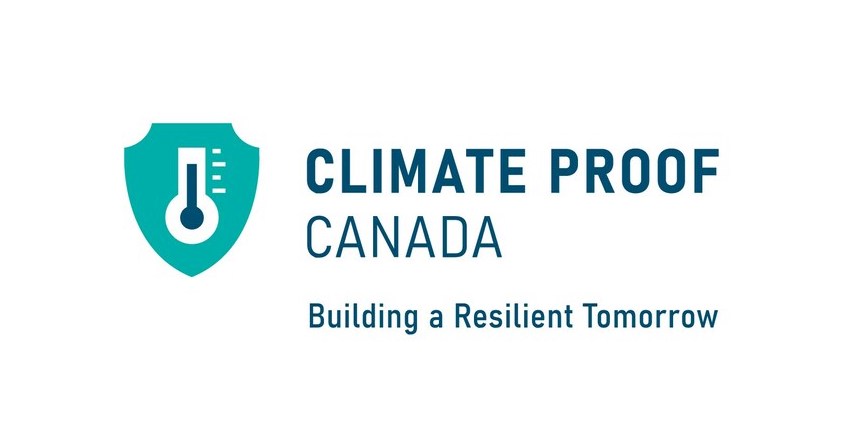
Climate Proof Canada calls for critical funding for the National Adaptation Strategy
November 6, 2023
By Climate Proof Canada

Climate Proof Canada is calling on the federal government to provide key funding for its National Adaptation Strategy to help defend Canadians from the increasing risk of more frequent and severe climate perils such as wildfires, floods and extreme heat.
Today in Ottawa, 75 members and supporters of the Climate Proof Canada Coalition met with cabinet ministers and key members of opposition parties. They delivered climate adaptation recommendations and showed strong support for including funding for the National Adaptation Strategy in the upcoming Fall Economic Statement and Budget 2024.
To drive rapid, tangible progress in the first five years of the National Adaptation Strategy, the coalition recommends that the government fund four key areas:
- Construct climate-proof housing
- Build climate-resilient infrastructure
- Enhance Indigenous resilience
- Adapt to extreme heat.
Members of the coalition met with Honourable Members of Parliament Steven Guilbeault, Patty Hajdu, Dan Vandal, and Harjit Sajjan, as well as Conservative Shadow Critic for Housing and Diversity and Inclusion Scott Aitchison, and NDP Leader Jagmeet Singh to discuss funding recommendations for urgent areas of climate-related risk.
“We all have a responsibility to help defend against climate-related disasters. Today we convened mayors, indigenous leaders, senior executives, and heads of organizations to demonstrate that adapting to climate change is an economic imperative,” said Jason Clark, Chair, Climate Proof Canada. “To deliver on the promise of our world-leading National Adaptation Strategy – and to better protect Canadians from climate-related threats and harm – requires government to invest at least $5.3 billion annually in the National Adaptation Strategy over the next six years.”
In collaboration with government policymakers, Climate Proof Canada’s members developed recommendations to guide federal investment. These recommendations will enable Canada to become more climate resilient, and its communities and economy to be better protected. An overview of the recommendations is available here and the full Climate Proof Canada report is available here.
Climate Proof Canada’s recommendations include the following.
- Climate-proof housing: Improve Canada’s housing resilience by developing a rating system so that new housing is built the right way in the right place – and is not unduly vulnerable to emerging threats. For example, as new homes are built to address the shortfall in affordable housing, they should be constructed in areas that are at minimal risk of flooding and other climate-related threats.
- National flood insurance program: Urgently deliver on the federal government’s pledge to create an affordable national disaster insurance program, beginning with flood protection, for those at highest risk. The flood program should be designed to discourage the building or rebuilding of homes in flood-prone areas.
- Climate-resilient infrastructure: Reduce infrastructure risk by incorporating climate resilience into all federal investment decision-making – and by prioritizing investments in natural infrastructure that bolster community protection. In particular, government should invest $2 billion this coming year – and at least $1 billion annually after that – in its Disaster Mitigation and Adaptation Fund, to reduce the risks associated with flooding, coastal erosion, wildfires and extreme heat.
- Indigenous resilience: Enhance resilience among Indigenous communities by investing directly to mitigate and defend against threats to local infrastructure and ways of life. Government should also expand existing program eligibility requirements so that First Nations, Métis and Inuit communities can better access initiatives related to the National Adaptation Strategy.
- Adaptation to extreme heat: Understand and respond to heat risk by investing in data acquisition, which will provide decision-makers and emergency management personnel with the key information they need to better alert and protect Canadians. In particular, government should support and fund the development of community-level interventions to assist the most vulnerable during extreme heat events.
This year was Canada’s most extreme wildfire season ever recorded. There were 6,569 wildfires and 18.5 million hectares were burned, and 155,856 residents were evacuated from their homes. Canada needs to take action now.
“The choices we make now will determine how prepared Canada will be to cope with the threats we face in the next few years and beyond,” says Clark. “Funding the National Adaptation Strategy will save lives, it will help ensure that our country’s economy is not adversely affected by the disruption caused by severe weather events, and it will reduce the likelihood that taxpayers will be forced to cover the costs of uninsured damages.”
Print this page